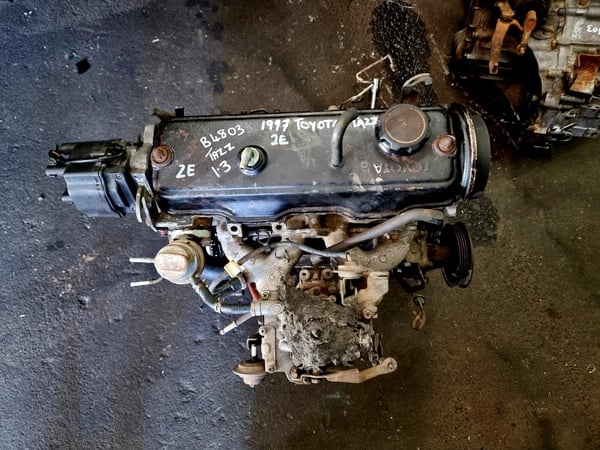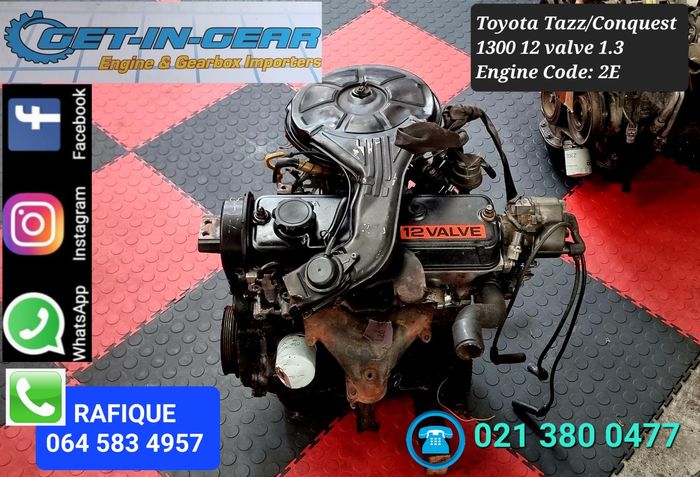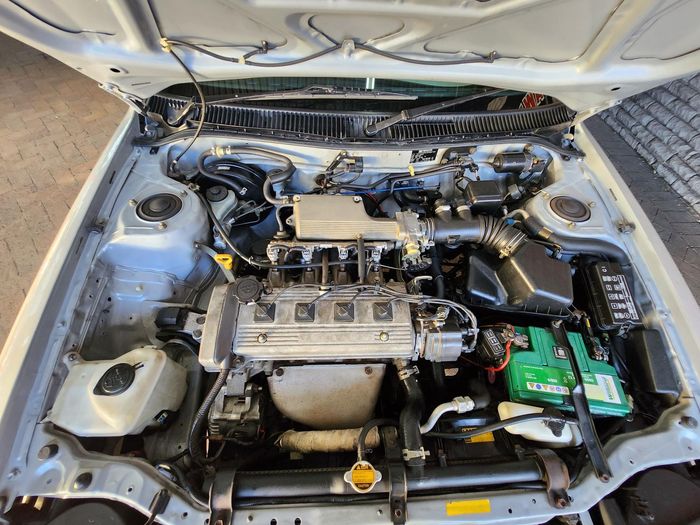Toyota Tazz: A Compact Car That Offers Big Value and Long-Term Durability
Toyota Tazz: A Compact Car That Offers Big Value and Long-Term Durability
Blog Article
Explore the most recent Patterns in Engine Innovation Via Tazz
In the rapidly developing landscape of vehicle modern technology, Tazz stands at the leading edge, highlighting significant innovations in engine systems that focus on both technology and sustainability. From hybrid engines that enhance gas efficiency to the appearance of hydrogen fuel cells, the patterns shaping modern powertrains are not only boosting performance yet additionally resolving vital environmental obstacles.
Hybrid Engine Innovations
Crossbreed engine innovations represent a crucial change in vehicle modern technology, integrating the advantages of internal burning engines with electric propulsion systems. This integration not only boosts fuel effectiveness however likewise reduces exhausts, conference significantly stringent ecological laws. By using both power resources, hybrid engines can optimize efficiency, providing power when needed while preserving gas during less demanding driving problems.
Current innovations in hybrid modern technology consist of renovations in battery effectiveness and regenerative braking systems. These innovations enable greater power healing throughout slowdown, which can be redirected to assist in velocity or power auxiliary systems. Furthermore, makers are focusing on light-weight materials and compact styles to make the most of the efficiency of hybrid powertrains.
The advancement of plug-in hybrids has additionally broadened the market, enabling vehicle drivers to charge their automobiles making use of typical electric outlets. This feature often enables substantial all-electric variety, further reducing reliance on standard fuels. tazz. As the auto industry remains to develop, hybrid engine innovations are anticipated to play a vital role in connecting the void in between traditional automobiles and fully electrical designs, offering a transitional solution that deals with varied consumer requirements and choices
Advances in Electric Powertrains
The vehicle landscape is quickly advancing, with electrical powertrains becoming a leading pressure in lasting transportation. Breakthroughs in electrical vehicle (EV) technology are significantly boosting effectiveness, user, and efficiency experience. Secret advancements include improvements in battery chemistry, which have increased power thickness, minimized charging times, and prolonged overall battery life.
Solid-state batteries, as an example, promise to transform the market by offering better security and efficiency contrasted to conventional lithium-ion cells. Moreover, innovations in regenerative braking systems are allowing lorries to recuperate power during slowdown, adding to overall effectiveness.
Along with battery modern technology, electrical motor styles are becoming more advanced. Advancements such as integrated electric motors and progressed thermal monitoring systems are assisting to enhance power shipment and decrease weight, eventually boosting automobile dynamics.

Collectively, these advancements emphasize the commitment to transition towards cleaner, extra effective transport options, positioning electric powertrains at the forefront of vehicle technology.
The Surge of Hydrogen Fuel Cells
Progressively, hydrogen gas cells are acquiring traction as a sensible option to typical internal burning engines and battery electric cars. This modern technology utilizes the chemical energy stored in hydrogen, converting it right into electrical power via an electrochemical response site link with oxygen. The key result of this process is water, making hydrogen gas cells an ecologically friendly choice with absolutely no emissions at the tailpipe.

Automakers are significantly investing in hydrogen fuel cell modern technology, identifying its possibility for long-range applications and fast refueling capabilities that equal conventional fuels. In addition, markets such as sturdy transportation and public transportation are especially fit for hydrogen gas cells, where battery electric remedies may fail because of weight and variety constraints.
As study and financial investment remain to broaden, hydrogen fuel cells are poised to play a significant function in the future landscape of tidy transport and energy options.
Enhancements in Internal Combustion Engines
Technologies in internal combustion engine (ICE) technology are changing standard cars to satisfy modern-day ecological standards and efficiency assumptions. Among the most considerable improvements entails the assimilation of advanced gas injection systems. These systems optimize the air-fuel mix, enhancing burning effectiveness and causing minimized exhausts. Straight fuel injection, for instance, enables better atomization of fuel, leading to more total burning and enhanced power outcome.
Furthermore, turbocharging has actually gotten importance, enabling smaller sized engines to provide greater performance without the weight of larger engines - tazz. This modern technology not only increases performance yet likewise adds to reduce fuel consumption. Variable shutoff timing systems are also being refined, allowing engines to adapt to various driving conditions for improved torque and responsiveness
In addition, making use of lightweight products in engine construction is becoming basic, additional boosting fuel performance by minimizing overall vehicle weight. Engine control devices (ECUs) are significantly sophisticated, making it possible for real-time changes that enhance performance and discharges.
These enhancements jointly symbolize a critical shift in ICE technology, straightening with check over here international sustainability objectives while still giving the efficiency drivers get out of their lorries. As the sector evolves, these improvements remain to form the future of traditional auto design.
Future Trends in Engine Performance
Considerable developments in engine efficiency are expected as makers concentrate on incorporating innovative technologies to satisfy rigorous environmental guidelines and consumer demands. The change in the direction of electrification, crossbreed systems, and alternate gas is improving the automobile landscape, driving innovations that enhance fuel economic climate and decrease discharges.
One of the essential trends is the application of innovative products and manufacturing techniques. High-strength alloys and light-weight compounds add to about his minimized automobile weight, hence improving total efficiency. In addition, the adoption of turbocharging and variable shutoff timing modern technologies permits enhanced power outcome from smaller sized engines, further boosting gas economy.

Conclusion
Innovations in crossbreed engine systems, electrical powertrains, and hydrogen fuel cells show a dedication to reducing discharges while improving performance. Renovations in internal burning engines and an emphasis on lightweight products contribute to total engine effectiveness.
From crossbreed engines that optimize gas efficiency to the introduction of hydrogen fuel cells, the trends shaping modern powertrains are not just improving efficiency however also resolving vital environmental difficulties.Crossbreed engine advancements represent a pivotal change in automotive modern technology, integrating the benefits of internal combustion engines with electrical propulsion systems.Furthermore, turbocharging has gotten prominence, allowing smaller engines to deliver greater efficiency without the weight of larger engines. Furthermore, the fostering of turbocharging and variable shutoff timing innovations enables for boosted power result from smaller engines, better enhancing fuel economic situation.
Enhancements in interior burning engines and a focus on light-weight products add to general engine efficiency.
Report this page